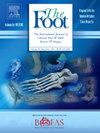An exploration of the mechanistic link between the enhanced paper grip test and the risk of falling
Abstract
The enhanced paper grip test (EPGT) offers an easy-to-use measure of hallux plantar-flexion strength that does not need expensive specialised equipment. Literature suggests that it could be a useful screening tool to assess the risk of falling in older people. However, research on a specific mechanistic link to the risk of falling is lacking. It is hypothesised here that muscle weakening (assessed by the EPGT) is indicative of impaired ability to recover balance after a slip or a trip. To get an initial assessment of validity of the above hypothesis, the EPGT is compared against an established lab-based measure of lower-limb strength that is capable of assessing a person’s ability to recover balance after a slip or a trip: maximum isometric leg press push-off force (leg press force). A gender-balanced sample of twenty people (median age=34 y) was recruited. Two different but equaly valid techniques of administering the EPGT were included regarding whether the participants’ ankle was supported by the examiner or not. Results for the two EPGT techniques differed susbtantialy but they were both significantly associated with leg press force and therefore linked to better ability to maintain balance after a slip or a trip. The “ankle not held” EPGT technique was more strongly correlated to leg press force (r(18) = 0.652, p = 0.002) than the “ankle held” (r(18) = 0.623, p = 0.003) and appears to be the more favourable technique to administer the EPGT. These findings offer new insight on a potential mechanistic link between the EPGT and the risk of falling and support its optimal use in future research involving older people.

 求助内容:
求助内容: 应助结果提醒方式:
应助结果提醒方式:


